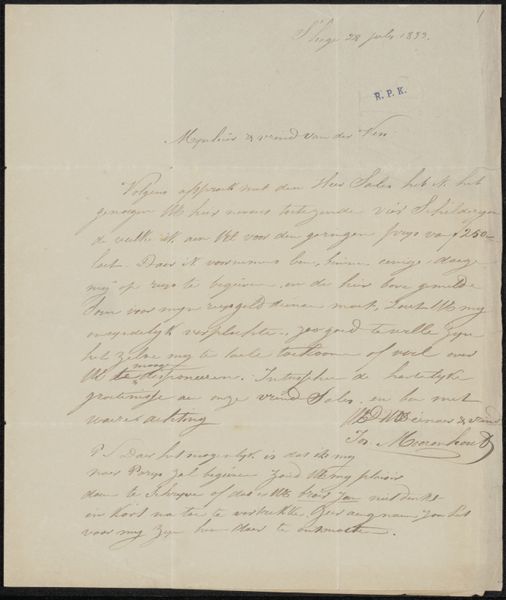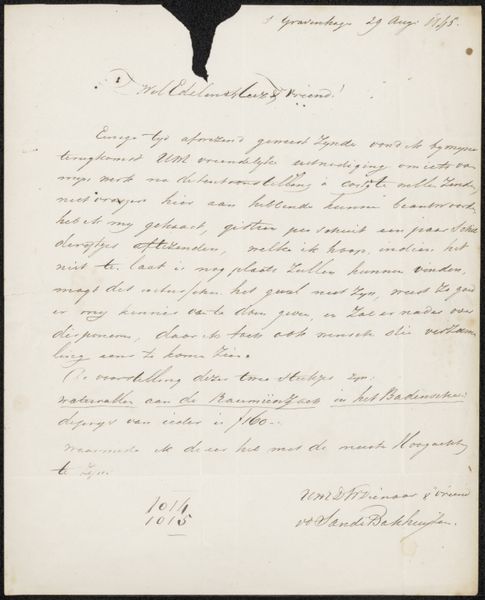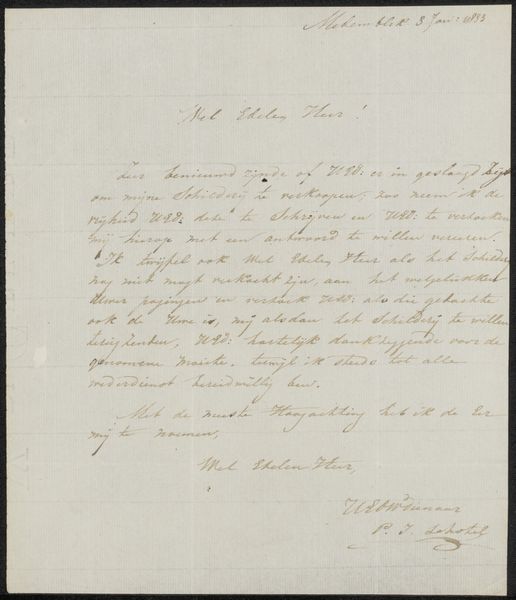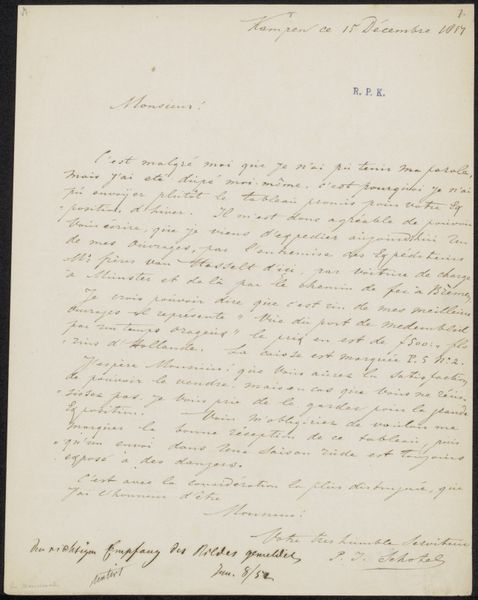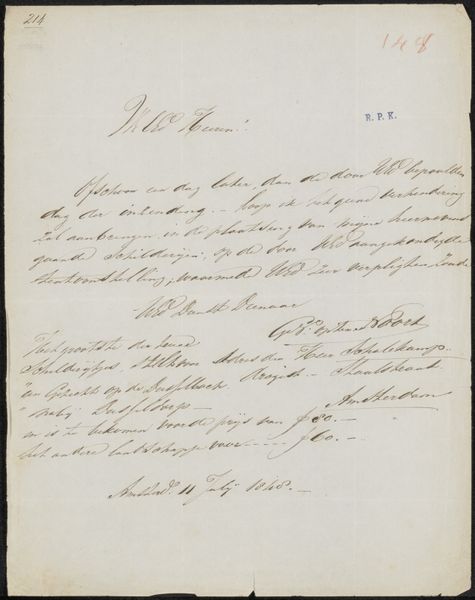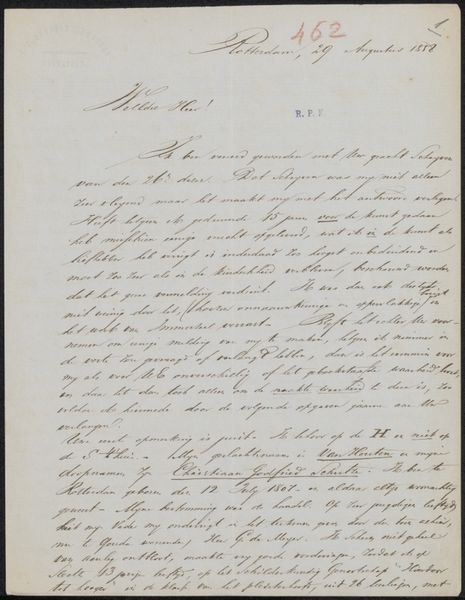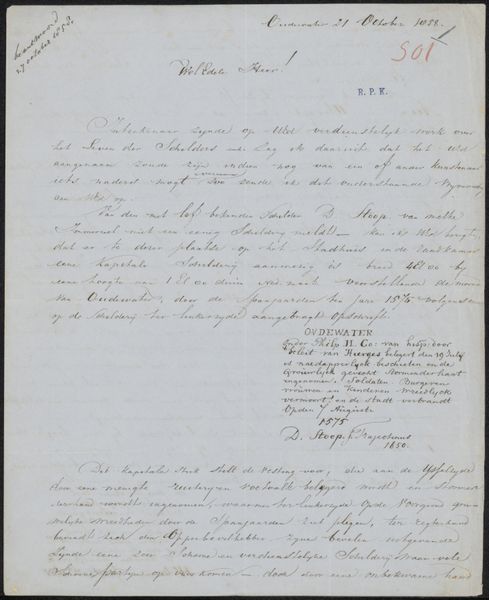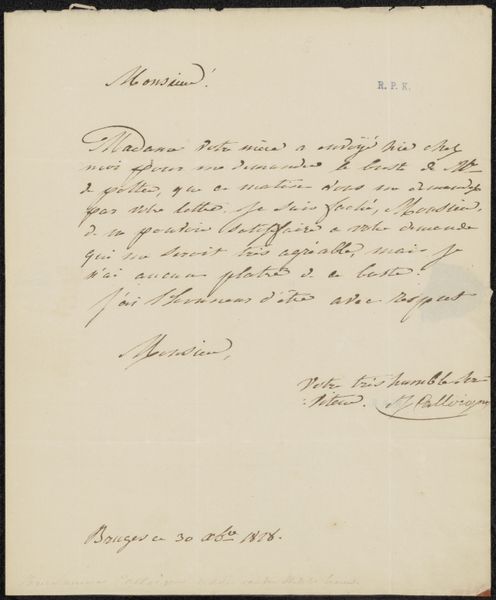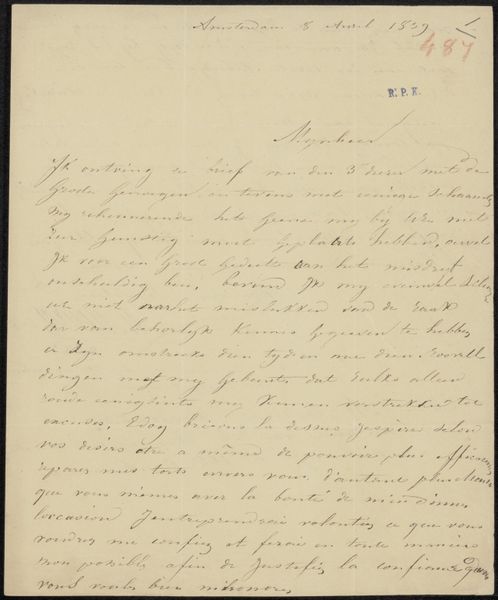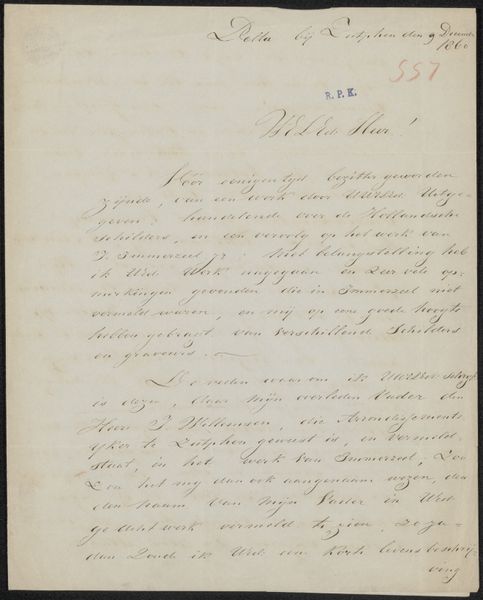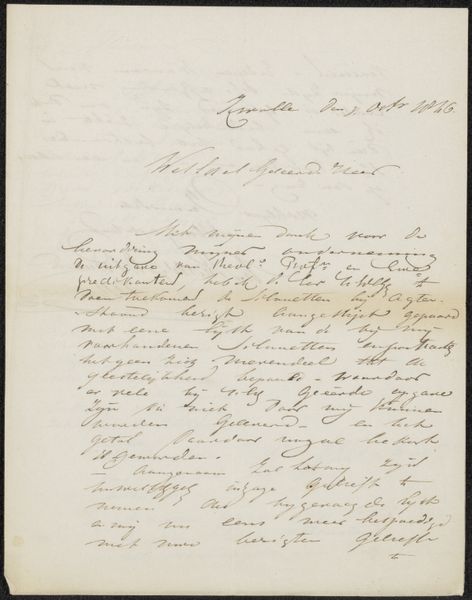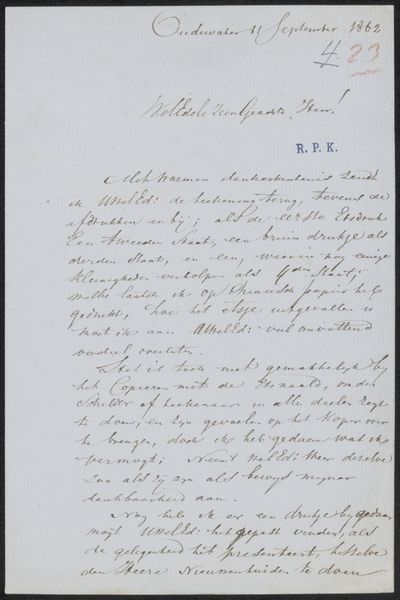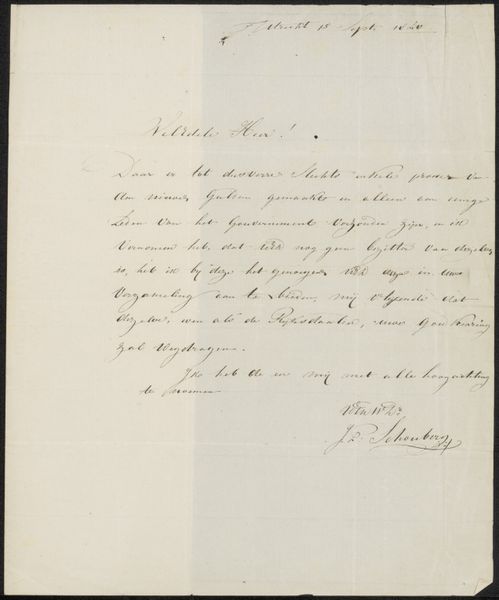
drawing, paper, ink
#
portrait
#
drawing
#
paper
#
ink
#
romanticism
#
calligraphy
Copyright: Rijks Museum: Open Domain
Curator: Before us is "Brief aan anoniem," or "Letter to an Anonymous Person," potentially created around 1828 by François Joseph Navez. The Rijksmuseum houses this ink drawing on paper. Its Romantic style gives it a particular appeal. What's your initial impression? Editor: I find this handwritten note unexpectedly haunting. It is so fragile, so ephemeral—like a whisper across centuries. The flow of the cursive, the very deliberate script, gives the letter a life of its own, a kind of encoded presence. Curator: I'm struck by the layers of social dynamics inherent in the gesture of letter-writing, especially within Romanticism's preoccupation with self-expression. Anonymous, in this context, speaks volumes about social constraints, potentially alluding to covert communications among circles with contested socio-political positions. Editor: Absolutely. The act of writing itself becomes a symbolic expression, the beautiful flourishes of the script carrying not just information but also an emotional charge, even a veiled symbolism that can represent coded ideas, intimate feelings, or concealed intent within certain communities of the time. This can act as a portal into the cultural mindset during that time. Curator: The absence of a named recipient creates an intriguing dynamic. The "anonymous" becomes a mirror reflecting the fears, desires, or even dissent of a particular readership or group of recipients who may or may not be explicitly identifiable, speaking to collective political and social anxieties of the day. Who needed to receive a clandestine message like this and what dynamics surrounded its message? Editor: And, isn’t the very style a statement? The delicate script, a Romantic sensibility…it’s almost a performance of vulnerability and feeling, hinting at what conventions had cultural meaning. Every pen stroke contains clues for us, revealing historical aesthetic patterns and behaviors through these specific techniques and compositions. It beckons us to unravel its cultural DNA. Curator: Indeed, it encourages us to confront power structures, and question what the work is attempting to say about social hierarchies or personal relationships embedded in the politics and hidden stories that shape historical dialogues. Editor: Thinking about those unseen narratives is profoundly affecting. This isn't just an old letter; it’s a relic of suppressed dialogues, a symbol of covert communication. Curator: I concur. And the material decay itself—the browning of the paper—adds a layer, reminding us of the tangible effects of history. Editor: I feel as if each character represents voices of communities both past and present whose words demand justice and revolution!
Comments
No comments
Be the first to comment and join the conversation on the ultimate creative platform.
